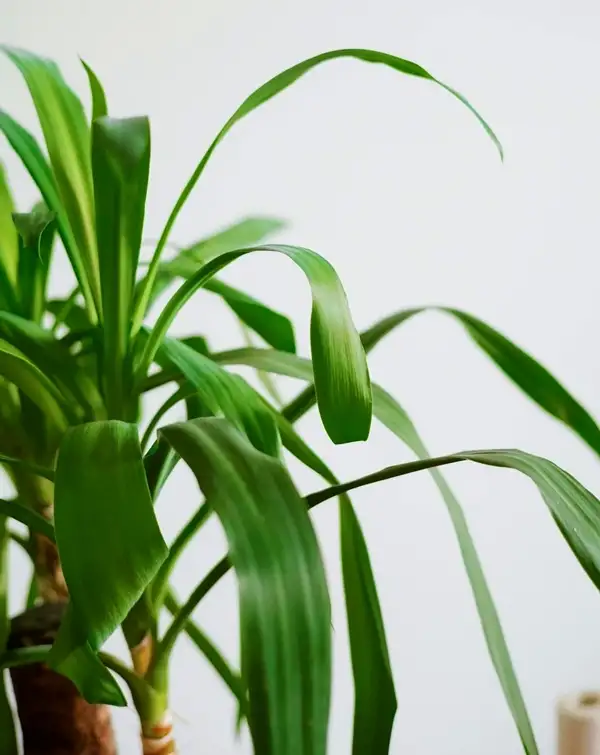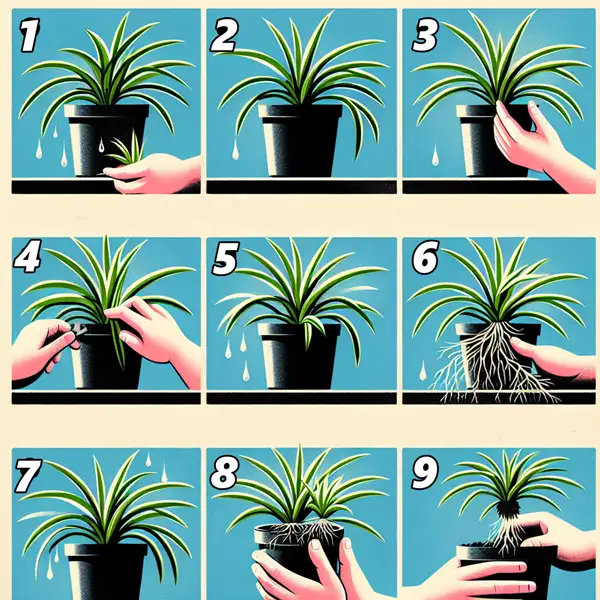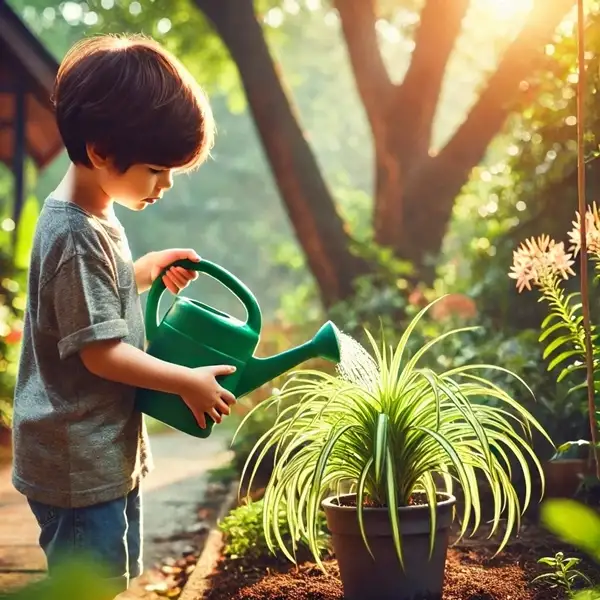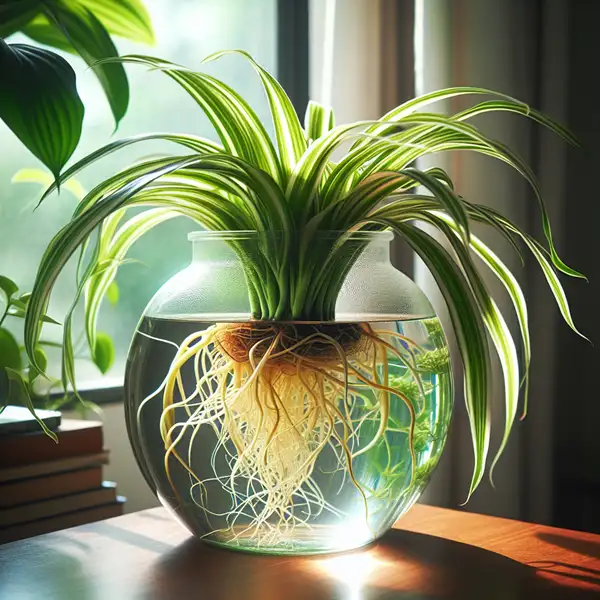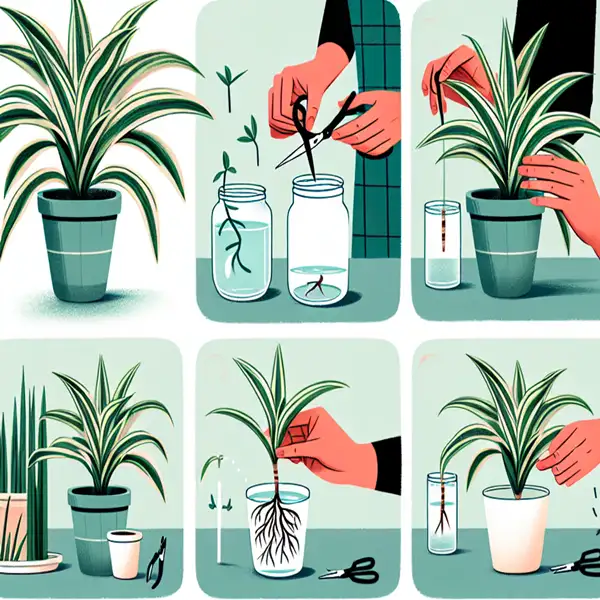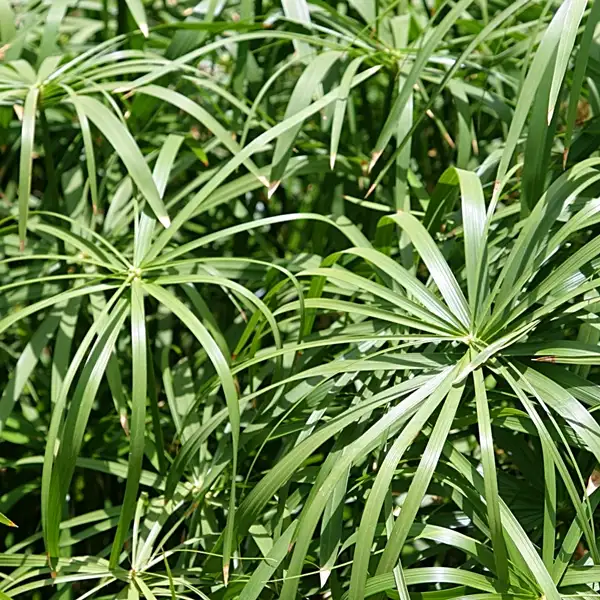Key Takeaways
| Key Takeaways | Why It’s Important |
|---|---|
| Spot Early Warning Signs | Recognizing subtle changes can save your plant before it’s too late. |
| Discover the Hidden Causes | Uncover what’s really behind those yellow leaves and browning tips. |
| Master the Perfect Growing Conditions | Learn the secrets of lighting, humidity, and temperature control. |
| Adopt the Best Care Techniques | Find out how to water, prune, and feed your plant for maximum health. |
| Why is my Spider plant dying? Let’s bring it back to Life | Step-by-step guidance on reviving a struggling spider plant. |
Spider Plant Characteristics
Everyone who keeps houseplants treats them like family members and friends. It’s concerning when we see our plants suffering or dying due to unknown factors, and for some, it can even be quite painful.
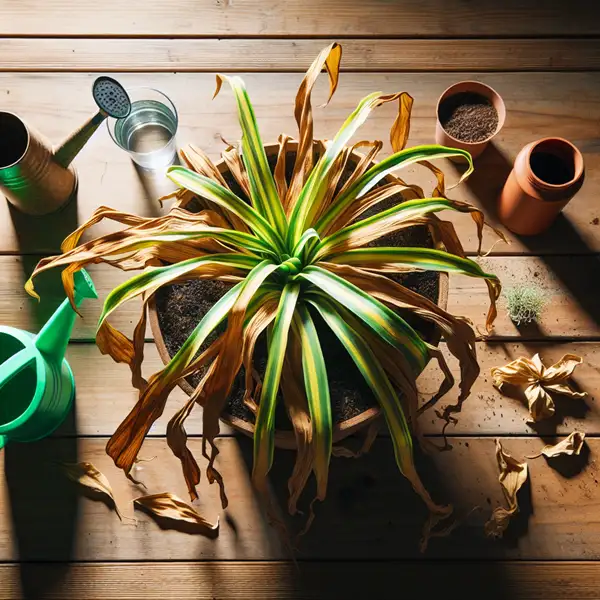
Being native tropical plants however means they have peculiar needs that must be met diligently otherwise you may end up asking ‘why is my spider plant dying?’ To prevent your beloved houseplant’s demise, you first need a comprehensive understanding of the visible signs of distress this resilient plant displays before death’s door truly opens on it.
5 Common Signs of a Dying Spider Plant
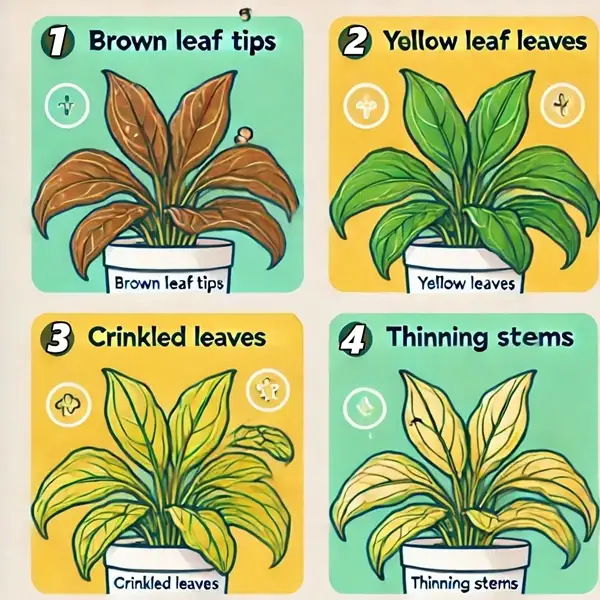
Determining whether your spider plant is dying requires knowledge of common symptom indicators/signs.
| Symptom | Possible Cause | Solution |
|---|---|---|
| Brown Leaf Tips 🌿 | Overwatering, underwatering, or low humidity | Adjust watering schedule to keep soil evenly moist; increase humidity levels around the plant |
| Yellow Leaves 🍂 | Overwatering leading to root rot or poor drainage | Ensure the pot has proper drainage; allow soil to dry out between waterings |
| Crinkled Leaves 🥀 | Underwatering or low humidity | Water the plant thoroughly when top inch of soil is dry; consider using a humidifier |
| Browning Leaf Margins 🔸 | High fluoride or chlorine levels in water | Use distilled or rainwater for watering; let tap water sit out overnight before use |
| Thinning Stems 🌱 | Root-bound conditions or nutrient deficiency | Repot the plant into a larger container with fresh and well-draining soil. Fertilize during the growing season |
4 Root Causes Of Your Spider Plant’s Decline
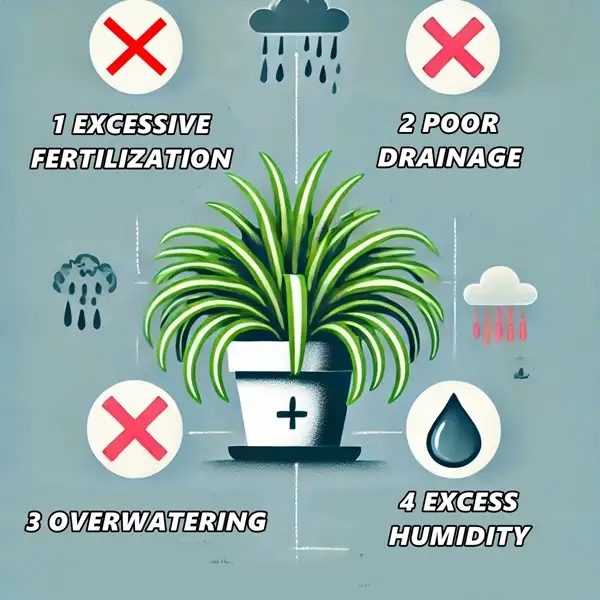
There exist many root causes for a dying spider plant and once you understand the common ones, you are better equipped to tackle this gardening conundrum.
- Apart from imbalanced watering schedules causing either overwatering or underwatering conditions, negligence towards properly draining pots also leads to waterlogged roots which eventually cause root rot.
- Equally consequential could be your choice of potting mix. Spider plants prefer well-draining soil that retains a certain level of moisture without becoming waterlogged.
- Excessive fertilization can also lead to salts buildup in soil leading to nutrient toxicity portrayed visibly through burnt leaf tips.
- Often overlooked aspects include local temperature and humidity levels. These tropical indoor favorites thrive best within 70-90 Fahrenheit while regarding humidity; anything below 50% is fairly catastrophic, especially during colder months when indoor heating dries out the air significantly.
Environmental Factors That Affect Health Of Your Spider Plant
Several environmental factors influence your spider plant’s health drastically including lighting conditions and seasons– too much direct sunlight scorches leaves causing yellow patches whereas limited light diminishes photosynthesis amount resulting in pale coloration instead of deep green healthy foliage one usually associates with thriving plants.
To prepare your spider plant for winter, gradually increase its tolerance to colder temperatures before the season fully sets in.
This important step is often overlooked, causing even hardy spider plants to suffer frost damage when moved suddenly from warm indoor spots to cold conditions.
Warm areas like window sills or balcony corners, which get plenty of sunlight during mild seasons, don’t help the plant adjust to the cold and can leave it unprepared for harsh weather.
Proper Care Guide – Ensuring Best Growth For Your Spider Plant
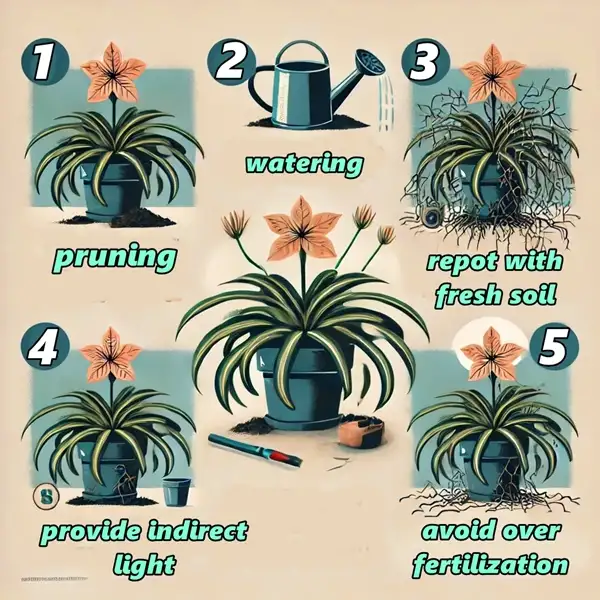
- Regular lukewarm watering keeping soil evenly moist but not water logged coupled with highly efficient drainage systems remains key here.
- Additionally, pruning dead or damaged leaves ensures healthier new growth.
- Equally important is maintaining desirable cluster sizes to enable uniform sunlight exposure throughout the entire plant body, essentially.
- Potting your spider plant in plastic containers with solid bottoms, preventing water from escaping & using fertile & well-draining soil is key.
- Regular feeding especially during summer with an organic fertilizer high in potassium helps maintain plant health & prevents common issues that can cause decline.
- Regularly inspect your snake plants for any signs of pests or diseases to catch any problems early on.
- Consider repotting every couple of years with fresh potting mix to rejuvenate soil nutrients & ensure healthy growth.
Resurrecting Your Library Lady – Best Revival Strategies
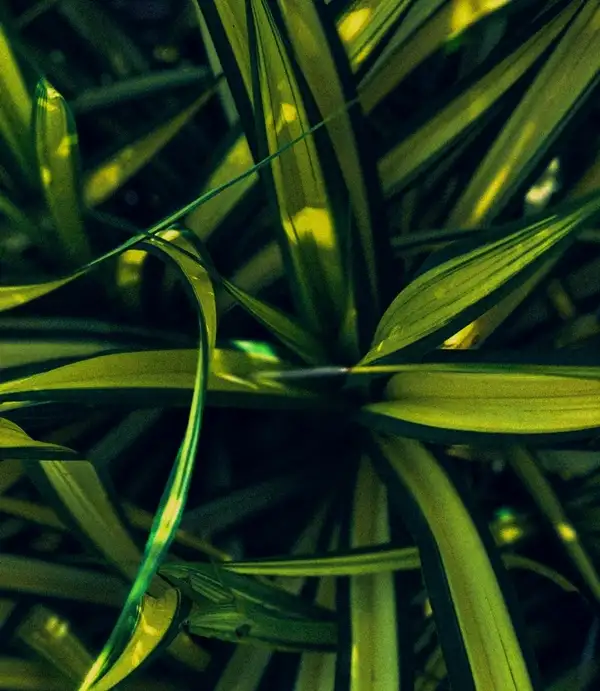
The first step towards reviving your dying spider plant is assessing its condition in relation to any possible mistakes made during its care routine. If plant was overwatered, cut back on watering schedule & allow soil to dry out completely before resuming regular & evenly spaced waterings. Continue this until you notice clear signs of recovery gradually appearing.
Plants suffering from root rot, however, need immediate repotting. Carefully remove all decayed roots as much as possible, then transfer the plant into fresh soil. After repotting, water minimally until new growth begins to show positive development.
Final Thoughts
As garden expert Henry Mitchell once said-
“Gardening is a matter of your enthusiasm holding up until your back gets used to it.”
The same can be applied to caring for your snake plant – with persistence and patience, you can nurse it back to health and prevent future decline.
Tending properly to our indoor plants, like these resilient yet beautiful spider plants, requires careful attention and ongoing vigilance against a variety of potential issues. These include excessive dryness, cold temperatures, and waterlogging, which can be deadly if not addressed immediately, as explained above. Happy Indoor Gardening!
Frequently Asked Questions
How do you save a dying spider plant?
Assess the plant for yellowing leaves or root rot. Let the soil dry if overwatered & repot if needed. Remove decayed roots & use well-draining soil. Maintain proper watering for recovery.
What does an overwatered spider plant look like?
Overwatered spider plants develop yellow or brown leaves, wilting despite moist soil & mushy stems.
Why is my spider plant turning brown and dying?
Overwatering, poor drainage, sudden temperature changes or fluoride in water cause browning. Adjust watering, ensure proper drainage & use filtered or distilled water.
Should I cut dying leaves off my spider plant?
Yes! Prune dying leaves with sterilized scissors to prevent disease & help the plant focus on new growth.
Will my spider plant grow back?
Yes! With proper care, new growth will emerge. Provide right light, water & nutrients to encourage recovery.


